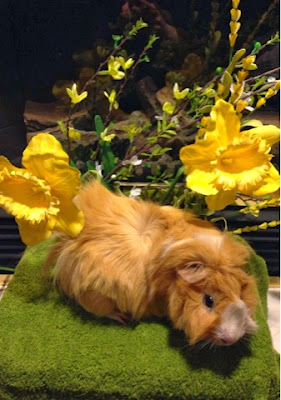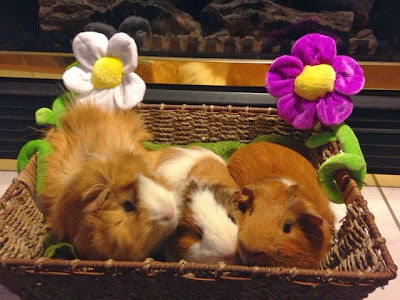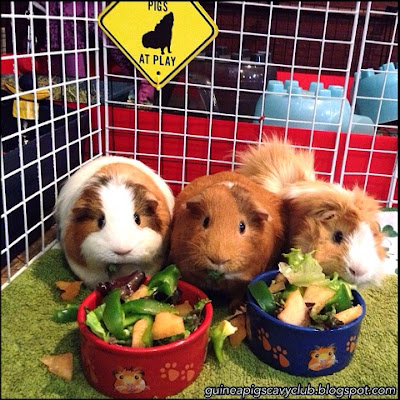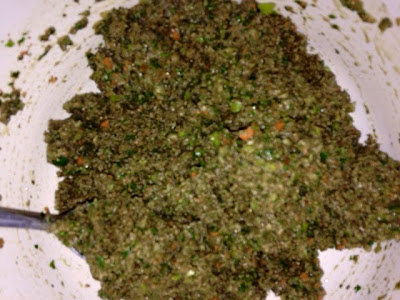First, it's important to know that guinea pigs are best suited for indoor temperatures in the 65-75°F range to remain healthy. There are beautiful days when outside temperatures are within this range, and you can enjoy the nice day with them. Many times there are days that are too hot or too cold, and we're still want them to enjoy the outdoors. I don't recommend it, because guinea pigs are very susceptible to getting upper respiratory infections that are difficult to treat. They must be treated by a vet with specific prescription antibiotics that are safe for them. Also, guinea pigs can't survive in hot weather. When the temperatures get warm, they cannot sweat, so they are susceptible to deadly heat strokes.
There are a few things to keep in mind when you decide to take your guinea pigs outside. First, will you be able to be with them at every moment? It is important that you be with them to protect them. If you cannot, you need to have a very secure pen to keep them in. I say this because there are many outdoor predators that can make a quick snack out of a defenseless guinea pig, and it isn't the predators' fault when you put the guinea pig in their environment. Raccoons can open latches and tear through weak screen such as chicken wire, as anyone with chickens knows. Hardware cloth is the safest heavy duty mesh to use to construct a pen, and I suggest 1/4" hardware cloth so that snakes and minks cannot fit through the holes. It should be covered too - providing your guinea pigs with shade and keeping hawks, eagles, etc. from snatching your pet. It's a very real risk that sadly does happen, even to small dogs.
If it's a little bit chilly, but you choose to have your guinea pigs outside, be sure the grass is completely dry and take a snuggle sack or blanket out for them to burrow in so they do not become chilled. Keep an eye out for runny or crusty eyes and noses, as this is a sign your guinea pig is getting sick and needs a vet's attention.
If it's getting warm outside when you choose to take your guinea pig out, have plenty of water available and a small shelter for shade for them - even an ice cream tub upside down with a hole cut in it can make a guinea pig shelter for a little outdoor foraging time. I would even poke a few holes around the sides, near the top of it for ventilation before letting your guinea pig use, if it's warm outside. A drill could make these holes really fast and easy. Click here to see ones made from Easter egg buckets.
It's best to use a basket that guinea pigs cannot jump out of, or a carrier to transport them outside if you have more than one guinea pig. This also makes it easier to bring them back in, especially if you're bringing them in before they're ready!
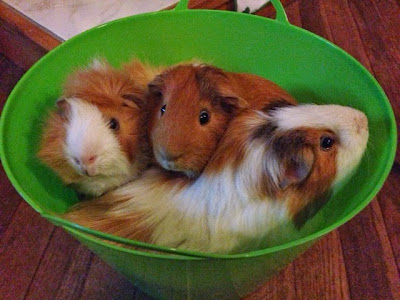 |
| Not the idea way to transport guinea pigs. |
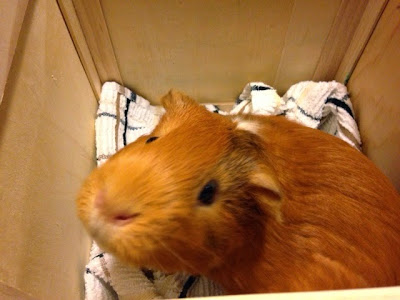 |
| A box may work if it's large enough to hold them all, and they can't jump out. |
I also recommend you have a puppy playpen or something of that effect to put around you and your guinea pigs, even while you're out there with them, especially if you have more than one guinea pig. Can you imagine what would happen if an unexpected loud noise suddenly happened and spooked your guinea pigs? Or a random dog came running up? Your guinea pigs may bolt in all different directions, and I can't imagine anything more scary than deciding which of my boys to try to save first. It's always better to be prepared than sorry.
Remember that guinea pig tummies can be sensitive to foods they haven't had for some time, so when introducing them to the outdoors for the first time in months (or ever) make the time outdoors brief, especially if you find the temperatures are not ideal. I suggest reading here too, for some information on plant safety. Keeping these things in mind, you and your guinea pigs will enjoy many beautiful days outdoors together! ❀








